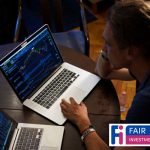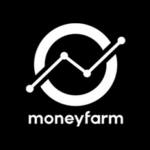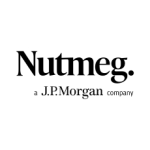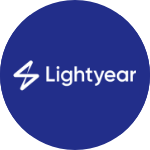How To Invest or Trade The FTSE 100
Buy The FTSE 100 – 3 Low-Cost ETF Funds
We look at options if you are looking to invest or looking to trade the FTSE 100
3 Top FTSE 100 ETF Fund Picks
1. iShares Core FTSE 100 UCITS ETF
The second most popular FTSE 100 ETF fund bought by investors according to Interactive Investor in December 2020 was the iShares Core FTSE 100 ETF.
Launched in 2000 this index tracker fund which replicates the FTSE 100 has a super low ongoing charge of 0.07%.
Managed by BlackRock this is a large fund with over £8 billion invested.
iShares run two versions of the fund:
-
-
- Accumulated Fund (stock code: CUKX) where dividends are accumulated.
- Distribution Fund (stock code: ISF) where dividends are paid out. Dividend income is paid quarterly (Income yield as at 2/12/2020 was 3.53%). If the fund is held in an ISA this income is not subject to income tax*.
-
Invest through:
Hargreaves Lansdown Platform »
Interactive Investor Platform »
2. Vanguard FTSE 100 UCITS ETF
According to Interactive Investor the Vanguard FTSE 100 ETF was the 4th most popular ETF fund purchased through its platform in December 2020.
Launched in 2012 this index tracker fund replicates the FTSE 100 Index and has a super low ongoing charge of 0.09%.
Managed by Vanguard the fund has £2.6 billion invested at the time of writing.
Vanguard run two versions of the fund:
-
-
- Accumulated Fund (stock code: VUKG) where dividends are accumulated.
- Distribution Fund (stock code: VUKE) where dividends are paid out. Dividend income is paid quarterly (Income yield as at 2/12/2020 was 3.92%). If the fund is held in an ISA this income is not subject to income tax*.
-
Invest through:
Hargreaves Lansdown Platform »
3. HSBC ETFS PLC FTSE 100 UCITS ETF
Launched in 2009 this index tracker fund replicates the FTSE 100 Index and has a super low ongoing charge of 0.07%.
Managed by HSBC Global Asset Management the fund has £289 million invested at the time of writing.
HSBC run one version of the fund:
-
-
- Distribution Fund (stock code: HUKX) where dividends are paid out. Dividend income is paid bi-annually (Income yield as at 31/10/2020 was 4.72%). If the fund is held in an ISA this income is not subject to income tax*.
-
Invest through:
Hargreaves Lansdown Platform »
Interactive Investor Platform »
Trading or investing in the FTSE 100 – What is the difference?
Trading the FTSE 100:
“If you are looking to trade the FTSE to make short term profits you can use products such as CFDs and spread bets to speculate on a FTSE 100 ETF share’s price increasing or decreasing without having to take direct ownership of the shares themselves”.
CFDs (Contracts For Difference) and spread betting are leveraged products, which means you can gain full exposure to the FTSE 100 through an ETF while only putting down a small deposit. While this magnifies possible profits, it does the same for losses.
CFDs & spread bets are popular among short term traders as profits and losses are realised immediately – making it faster to open and close trades.
However, this doesn’t mean you can’t use them for longer-term positions too.
You’d just need to consider the costs involved in maintaining a position – such as overnight funding – and the bet duration as spread bets do have fixed terms.
They also enable you to buy and sell shares online without ever owning the underlying asset. This has tax benefits and means you can trade both rising and falling markets (Tax laws are subject to change).
Investing in the FTSE 100:
As an investor you will be looking to invest in the companies that make up the FTSE 100 in the hope that over time the Companies that make up the Index grow & generate good profits.
As an investor you are typically investing for the longer term e.g. 5 years or more is normal.
When you buy shares you become a part owner of that Company and gain shareholder rights including any income that is paid as dividends.
With profits you make on share trading capital gains and dividends earned may be subject to tax at your personal rate. Tax can be mitigated if you trade within an ISA or Self Invested Personal Pension account.
How To Buy The FTSE 100 Using ETFs
-
-
- Select a share platform – See below our top 3 platform picks
- Open your share account – To do this you will need your bank details and national insurance number
- Fund your account – You will need to fund your a/c with a debit or credit card or bank transfer
- Search for the ETF using the stock code – Type in the stock code into the search box
- Check out the latest info and price for the selected ETF – Some platforms offer free research and analysis
- Buy the ETF – Nice and easy!
-
Our view: The next generation of online trading platform means you can buy ETF funds in as little as 10 minutes! See our top picks for buying ETFs below:
What is a FTSE 100 exchange traded fund (ETF)?
An exchange-traded funds (ETFs) are investments that look to mirror the performance of a particular market index.
They are passive investments and aim to replicate the movement of an index and deliver returns that are closely matched to the index being tracked.
With a fund or ETF that tracks the FTSE 100 your returns will reflect the performance of the top 100 UK firms by capitalisation that make up the index.
How do they work?
Tracker funds and ETFs work by:
- Full Replication – physically buying shares of the 100 companies that make up the FTSE 100 or by
- Partial replication – using more complex investments to replicate the movement in the index.
Each of the funds listed above employ a “passive” investment strategy designed to replicate the performance of the FTSE 100 index.
Some tracker funds attempt to fully replicate the index by holding all of the constituent shares in approximately the same proportion as their weighting in the index.
Other tracker funds use an index sampling process holding a representative sample of shares which approximate to the full index mirroring key risk factors and other characteristics.
Tracking error measures the volatility of the return difference between the fund and the FTSE 100 index.
It is calculated as the standard deviation of the tracking difference between the tracker fund and the index (gross of fees for the trailing 36-month period, or since the fund’s inception if it does not have 36 months of performance history).
A low tracking error means an index tracker fund is closely following the performance of the FTSE 100 Index. The tracking error gives you a measure of how closely the fund is replicating the FTSE 100.
With index tracker finds which are passively managed, generally the lower the tracking error the better.
How do investment platform costs compare when investing in a FTSE 100 ETF?
Today’s investor in 2021 has a lot of investment platform options to choose from.
“One of the key considerations is cost… However picking the “cheapest” is not as simple as it sounds, as each platform has its own costing model which often makes it difficult to compare like for like”.
Below we have outlined what can expect to pay in charges for 4 of the UK’s largest and most popular investment platforms based on investing in a low cost tracker fund (iShares Core FTSE 100 UCITS ETF).
As you can see from below, the amount you are investing will determine the cost-effectiveness of the platform. For larger sums, Interactive Investor with a flat fee model offer value for money while for sums under £100k AJ Bell are worth considering.
| Investment Platform | Annual Platform Fee | iShares OCF Fund Charge |
Annual Charge on £10,000 |
Annual Charge on £20,000 |
Annual Charge on £40,000 |
Annual Charge on £100,000 |
Annual Charge on £250,000 |
|---|---|---|---|---|---|---|---|
| Interactive Investor | £9.99 pm flat fee | 0.7% | £126.88 | £133.88 | £154.88 | £189.88 | £294.88 |
| Hargreaves Lansdown | 0.45% up to £249,999, reducing to 0.25% from £250,000 to £1m, reducing to 0.10% from £1m to £2m. No fee for assets over £2m |
0.7% | £52 | £104 | £208 | £520 | £1,300 |
| AJ Bell | 0.25% on the first £250K | 0.7% | £32 | £64 | £128 | £320 | £800 |
| Fidelity | 0.35% from £7,500 to £249,999, reducing to 0.2% from £250,000 to £1m. No fee for assets over £1m |
0.7% | £42 | £84 | £164 | £420 | £675 |
As you can see the right platform for you will depend on how much you are investing.
Other considerations include:
- How easy is the platform to use, and what tools and research are on offer
- What fund discounts are there? different platforms have negotiated different discounts on funds
- Customer reviews – useful in understanding strengths and weaknesses of platform providers
- Level of customer service provided
Tags





